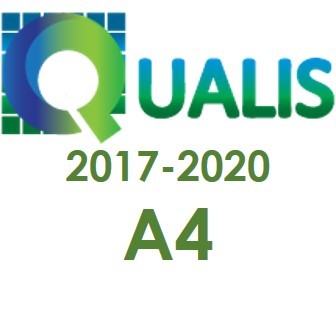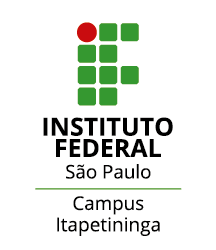Enxame de partículas aplicado a uma rede neural como backpropagation para otimização de tempo de jogo
Palavras-chave:
Aprendizado de máquina., Particle swarm optimization., Jogo do Chrome.Resumo
Este trabalho explora o algoritmo enxame de partículas como backpropagation de uma rede neural, baseando-se no jogo offline do Google Chrome, que é um endless runner (jogo onde o personagem corre automaticamente e continuamente para a direita), com o objetivo de maximizar o tempo de jogo. Para otimizar a rede foi utilizado o Particle Swarm Opmization (PSO) que é uma técnica de backpropagation criada para simular comportamento de um bando de pássaro. Pode-se concluir que o algoritmo PSO foi eficiente para o processo de otimização uma vez que os jogadores conseguiram atingir o tempo máximo estipulado em apenas 4 rodadas.
Downloads
Referências
AGUIAR, F. G. Utilização de Redes Neurais Artificiais para detecção de padrões de vazamento em dutos. 2010. p.95. Tese de Doutorado, Térmica e Fluidos - Universidade de São Paulo, São Paulo, 2010.
BÖRSTLER, J.; BRUCE, K.; MICHIELS, I. Sixth workshop on pedagogies and tools for learning object oriented concepts. ECOOP, p. 84-87, 2003. Acesso em: 04 out. 2020.
HARBOUR, J. S. Programação de Games com Java. Tradução da 2.ed. Boston: Cengage Learning, 2010.
HAYKIN, S. Redes Neurais: princípios e prática. Porto Alegre: Bookman Editora, 2007.
KENNEDY, J.; EBERHART, R. Particle swarm optimization. IEEE, p. 1942-1948, 1995. Acesso em: 04 out. 2020.
KHARE, A.; RANGNEKAR, S. A review of particle swarm optimization and its applications in solar photovoltaic system. Applied Soft Computing, v. 13, n. 5, p. 2997-3006, 2013. Acesso em: 04 jan. 2021.
MARINI, F.; WALCZAK, B. Particle swarm optimization (PSO). A tutorial. Chemometrics and Intelligent Laboratory Systems, v. 149, p. 153-165, 2015. Acesso em: 07 out. 2020.
MARTINIANO, A.; FERREIRA, R.P.; FERREIRA, A.; FERREIRA, A.; SASSI, R.J. Utilizando uma rede neural artificial para aproximação da função de evolução do sistema de Lorentz. Revista Produção e Desenvolvimento, v. 2, n. 1, p. 26-38, abr. 2016. Acesso em: 01 out. 2020.
MANZANO, J. A. N. G.; JÚNIOR, R. A. C. Programação de computadores com java. Saraiva Educação SA, 2014.
MCCULLOCH, W. S.; PITTS, W. A logical calculus of the ideas immanent in nervous activity. The bulletin of mathematical biophysics, v. 5, n. 4, p. 115-133, 1943. Acesso em: 02 jan. 2021.
MOHAMMAD, A. A.; SOHRAB, Z.; ALI, L.; ALI, E.; IOANNIS, C. Reservoir permeability prediction by neural networks combined with hybrid genetic algorithm and particle swarm optimization. Geophysical Prospecting, v. 61, n. 3, p. 582-598, 2013. Acesso em: 18 jan. 2021.
NORVIG, P.; RUSSELL, S. Inteligência Artificial: Tradução da 3.ed. Rio de Janeiro: Elsevier Brasil, 2013.
ORACLE. Class Canvas. Java Platform. 7.ed, 2018. Disponível em: <https://docs.oracle.com/javase/7/docs/api/java/awt/Canvas.html>. Acesso em: 06 out. 2020.
POLAK, E., Computational Methods in Optimization: A Unified Approach. Cambridge: Academic Press, 1971.
RUMELHART D. E.; HINTON G. E.; WILLIANS R. J. Learinig representations by back propagation error. Nature, v. 323, nº. 9, p. 533-536, 1986. Acesso em: 22 jan. 2021.
SARAMAGO, S. F. P.; Métodos de otimização randômica: Algoritmos genéricos e Simulated annealling. Sociedade Brasileira de Matemática Aplicada e Computacional, v. 6, p. 25-26, 2003. Acesso em: 01 abr. 2021.
SLOWIK, A.; BIALKO, M. Training of Artificial Neural Networks Using Differential Evolution Algorithm, IEEE, p. 60-65. 2008. Acesso em: 02 out. 2020.
TAVARES, L.V.; Correia, F. N. Optimização linear e não linear: conceitos, métodos e algortimos. 2.ed. Lisboa: Livraria Portugal, 1986.
VAHLDICK, A. Uma experiência lúdica no ensino de programação orientada a objetos. XVIII Simpósio Brasileiro de Informática na Educação, Blumenau, n.1, 2007.
WOS. Trust the Difference. Web of Science Fact Book, 2021. Disponível em: <https://www.webofknowledge.com>. Acesso em: 09 mar. 2021.
XU, C. W. Learning Java with Games. 2.ed. New York: Springer, 2018.
ZHENYA, H.; Chengjian, W.; Luxi Y.; Xiqi G.; Susu Y. Extracting rules from fuzzy neural network by particle swarm optimisation, IEEE, p. 74-77. 1998. Acesso em: 09 mar. 2021.
ZSOLT, L. K. Redes Neurais Artificiais: fundamentos e aplicações. São Paulo: Livraria da física, 2002.
Arquivos adicionais
Publicado
Como Citar
Edição
Seção
Licença
Copyright (c) 2022 Revista Brasileira de Iniciação Científica

Este trabalho está licenciado sob uma licença Creative Commons Attribution-NonCommercial-ShareAlike 4.0 International License.




